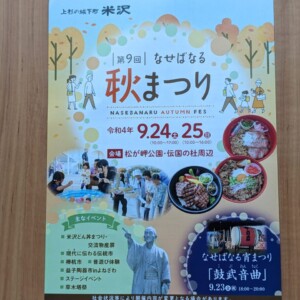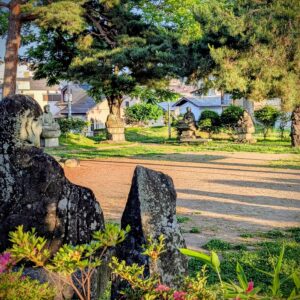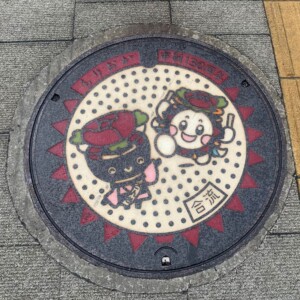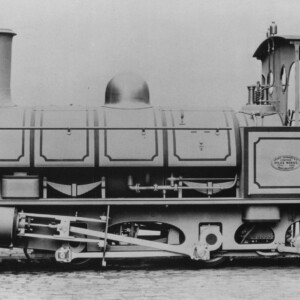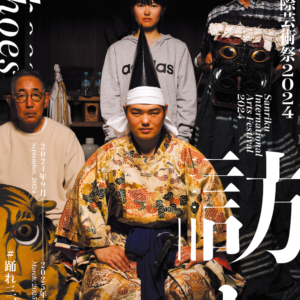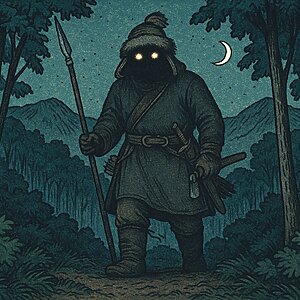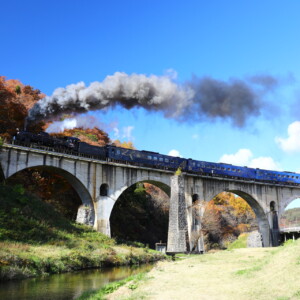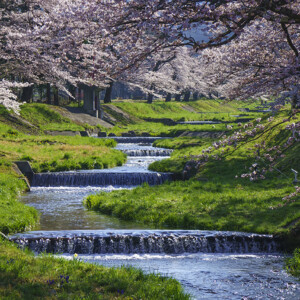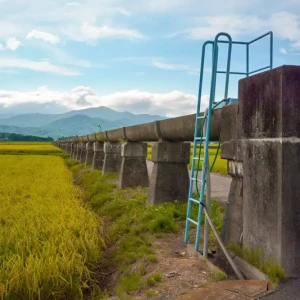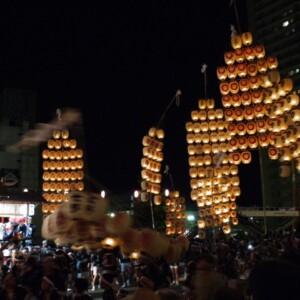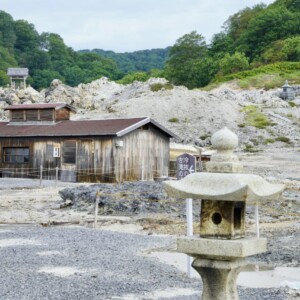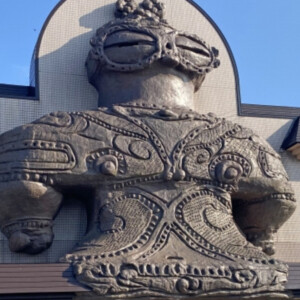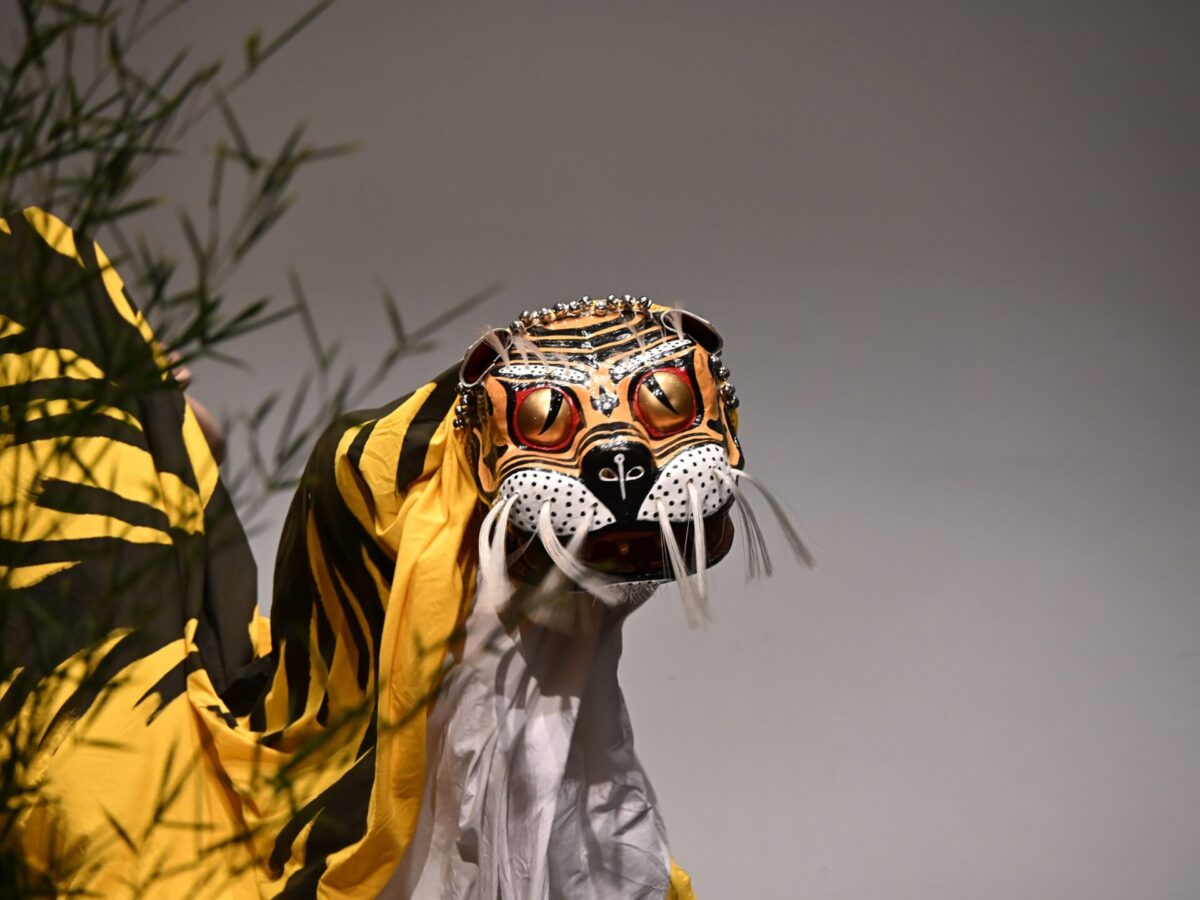
Sanriku performing arts come together! Photo report from the Sanriku International Arts Festival 2025 "Kamasu" [Kamaishi City, Iwate Prefecture]
table of contents
What is the Sanriku International Arts Festival?
The Sanriku International Art Festival was launched in 2014 in response to the Great East Japan Earthquake .
This international event, which aims to highlight various local performing arts from the Sanriku coastal region and promote exchanges with performing arts and artists from around the world, will be held for the 11th time this year (the 2020 event was canceled due to the spread of COVID-19).
The main program in 2025 will be held in Kamaishi City
If you look at the events section of the official website, you will see a lot of events, which may seem complicated at first glance, but the main focus is "Main Event" and "Affiliated Program," and the rest of the information is about local festivals held in the Sanriku region.
The main event of the Sanriku International Arts Festival is held every year in one of the cities in the Sanriku region, and this year it was held over two days, on October 4th and 5th, in Kamaishi City .
By the way, last year it was held in two locations: Hachinohe City, Aomori Prefecture and Otsuchi Town, Iwate Prefecture.
Various programs that allow you to not only "watch" but also "experience" various performing arts
This was my first visit, and I was surprised to find that the festival not only introduced and showcased a variety of local performing arts, but also included a rich program of interactive activities for visitors, such as hands-on lectures on tiger dance and kagura, including actual dance instruction, and youth meetings to discuss issues surrounding local performing arts.
Even for people who normally only have some exposure to local performing arts, such as "they do something at shrines," there was an opportunity to learn things they didn't know, such as "What's the history?", "What kind of people perform it?", and "How did it become rooted in the local area?", and to feel closer to the performing arts. I got the impression that much of the content had this intention.
There is an image of local performing arts, which have aspects of religious ceremonies and dedication ceremonies, as something special, and I myself had somehow thought of the performers as special people. However, after my performance was over, seeing the performers mingling with the audience, chatting normally with their friends and families and laughing, I realized, albeit a very ordinary thing, that they are just ordinary people, and I was able to feel closer to performing arts than ever before.
I think one of the unique features of the Sanriku International Arts Festival is the close "distance" between the performers and the audience.
Sanriku International Arts Festival <Information>
- Official URL: https://sanfes.com/
Kamaishi Civic Hall TETTO <Information>
- Name: Kamaishi Civic Hall TETTO
- Address: 1-1 Omachi, Kamaishi City, Iwate Prefecture, 026-0024
- Phone number: 0193-22-2266
- Official URL: https://www.tetto-kamaishi.jp/
Google Map
10/4 – Opening Night Party "Tiger Dance & Kagura Inn"
The first day, October 4th, was the so-called "eve of the festival." It began at around 6:00 PM at the venue, Kamaishi Civic Hall, once the sun had completely set.
Three local performing arts were performed on the day: "Nishikicho Toramai" "Utori Kagura ," a Yamabushi Kagura dance handed down at Utori Shrine in Fudai village "Kanazawa Kagura," a Yamabushi -style Kagura dance handed down in the Kanazawa area of Otsuchi town
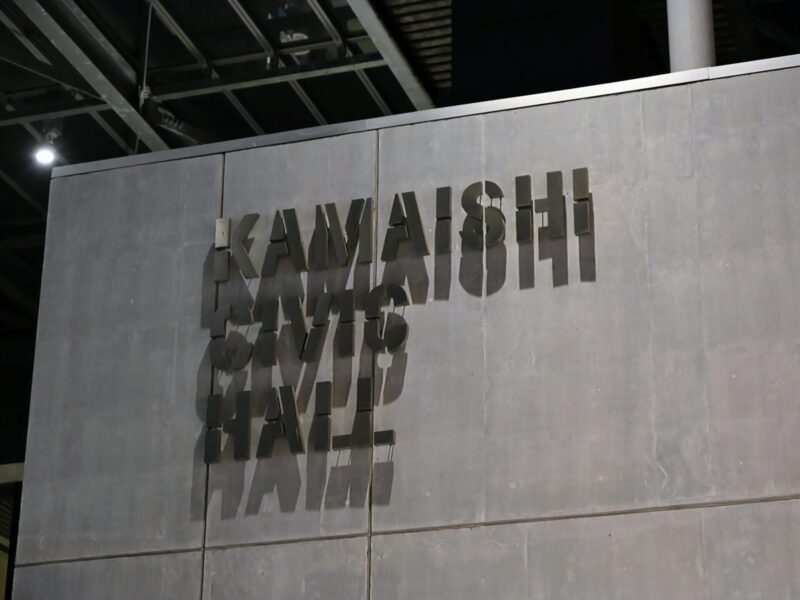
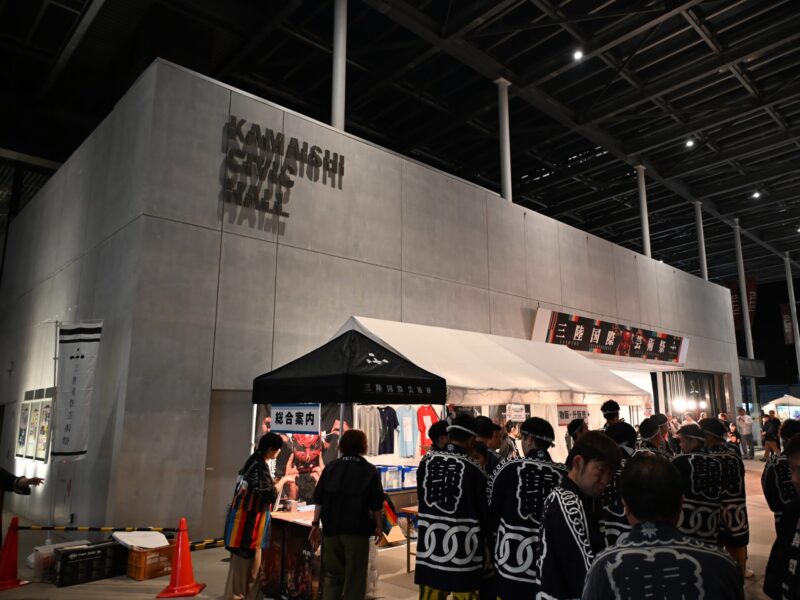
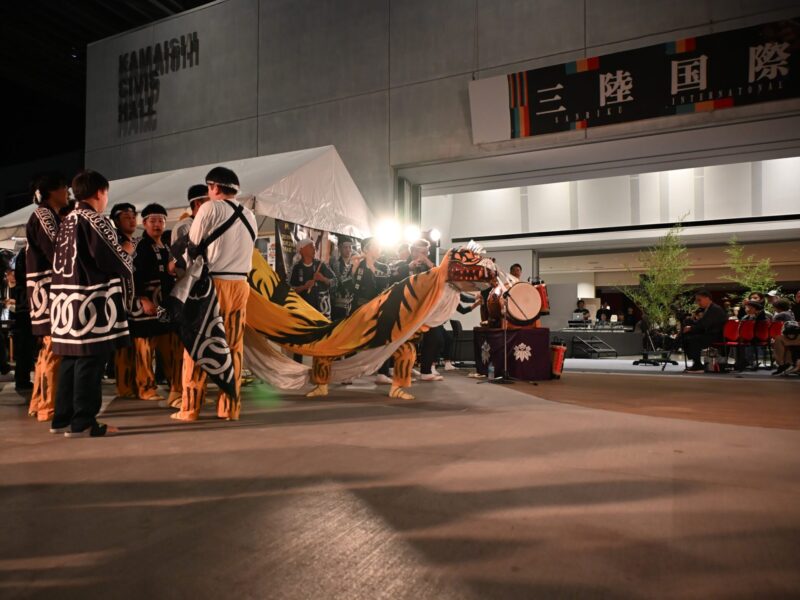
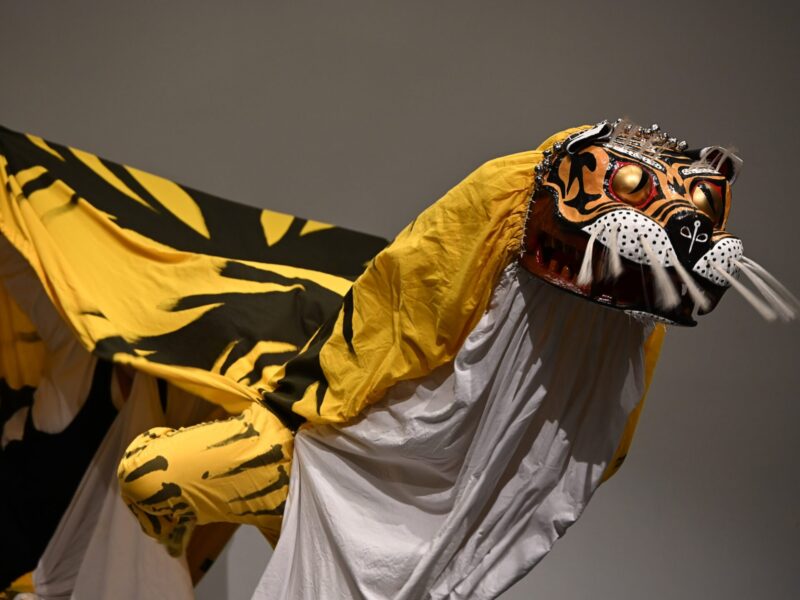
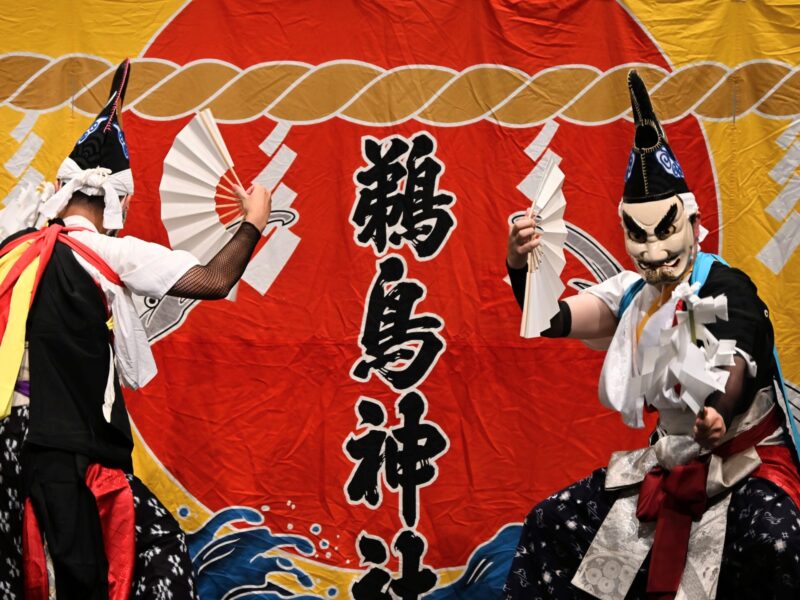
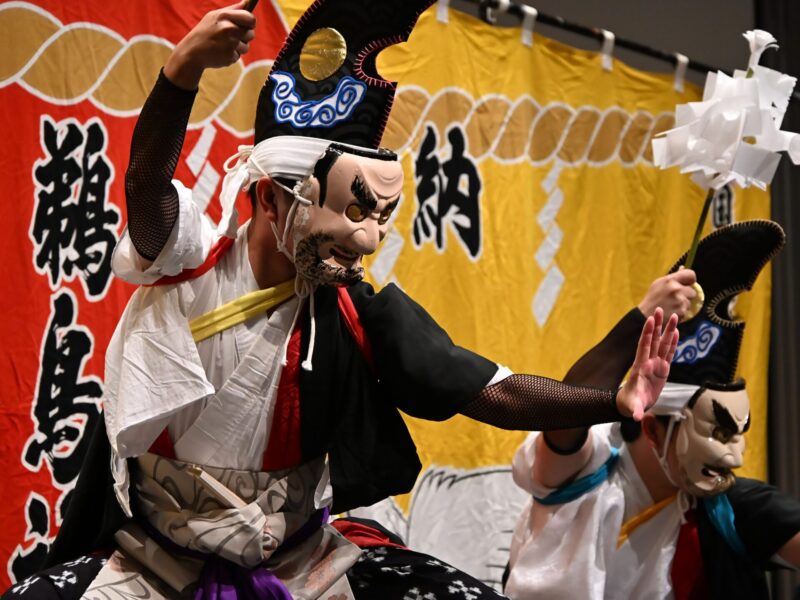
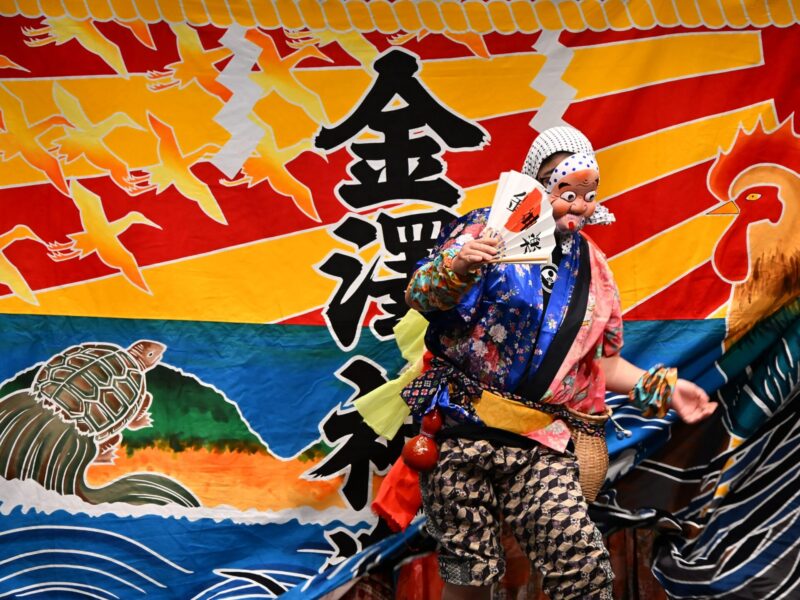
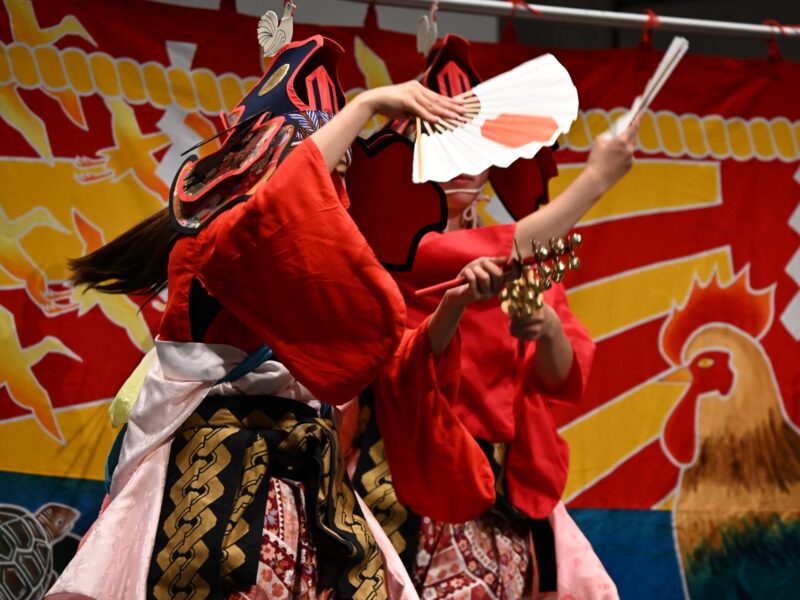
The main venues on this day were the outdoor plaza and Hall B of Kamaishi Civic Hall. Hall A featured a variety of exhibits related to performing arts from all over Sanriku.
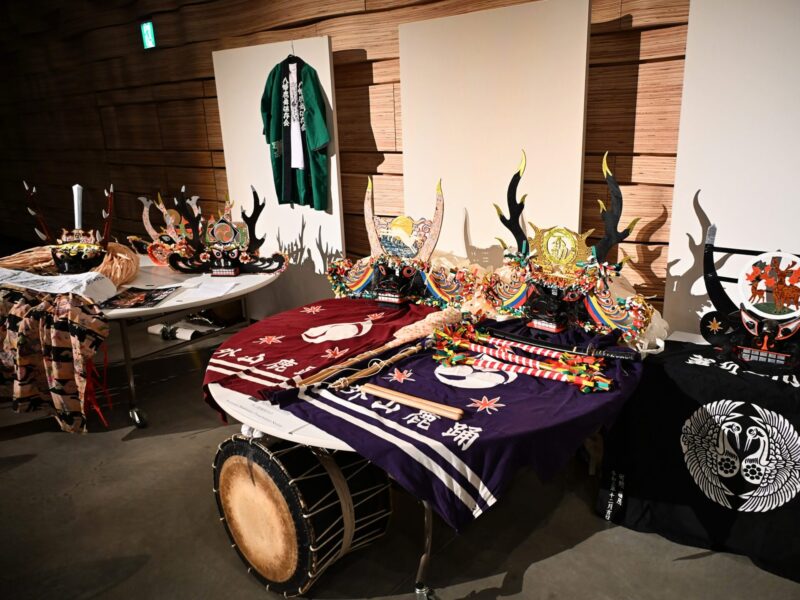
Another thing I was looking forward to was the all-you-can-drink corner for local Kamaishi sake, "Hamachidori ." After purchasing your first 180ml sake, you can drink as much as you want from then on, which was a very nice service.
We had planned to take some photos before drinking, but when we got to the booth shortly after, we were told that the drinks had sold out quickly... It seems they were quite popular. With no other choice, we headed to a local izakaya after the event to enjoy some.
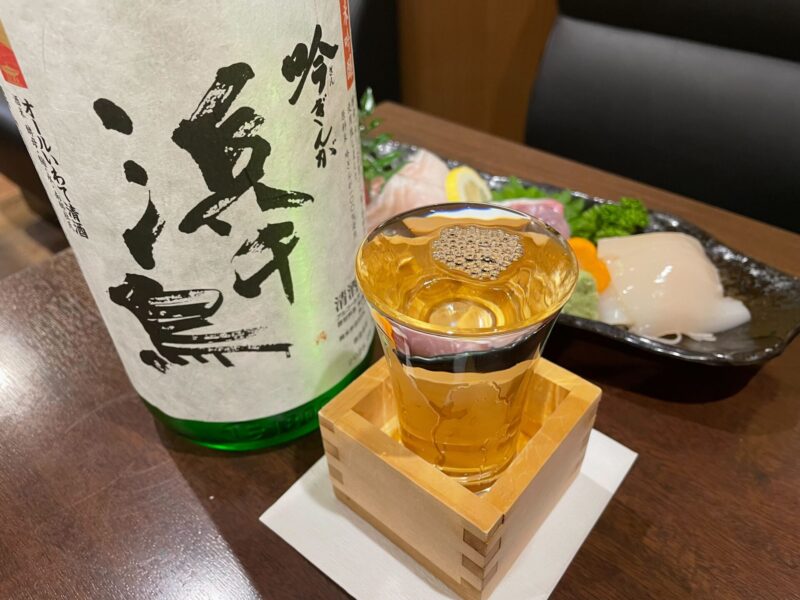
10/5 – Main Festival
Sanriku Performing Arts Youth Meeting
The second day of the festival kicked off with the "Sanriku Performing Arts Youth Meeting ." A public discussion was held with a focus on young people in the performing arts, with the theme of "creative succession of performing arts."
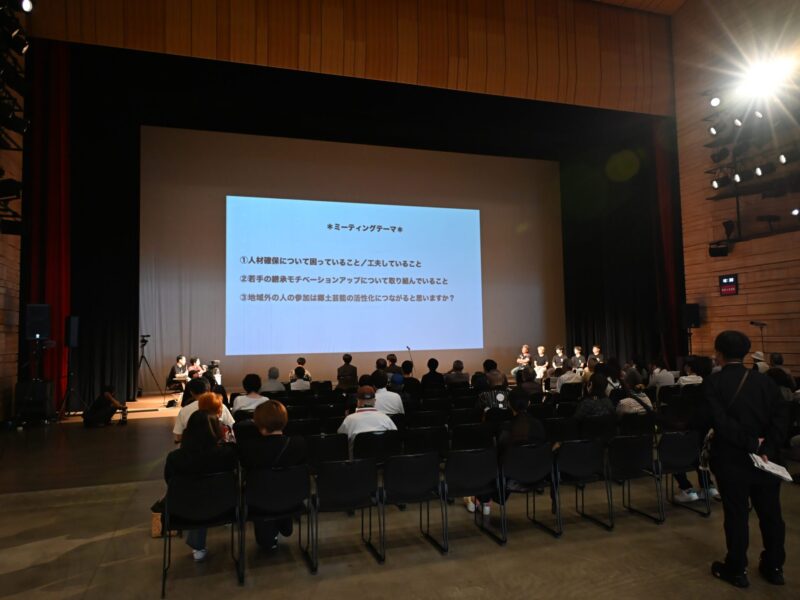
Sanriku Festival Music and Bon Odori Festival
The main stage on this day was the indoors in Halls A and B. Between the performances, a three-part performance of "Celebratory Music and Bon Odori" was held in the outdoor plaza.
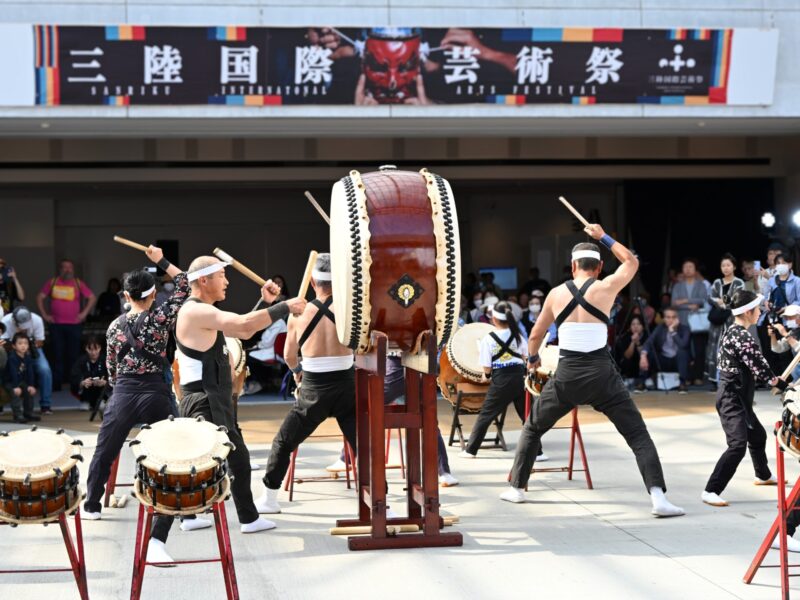
"Namomi Taiko" was performed in the first part .
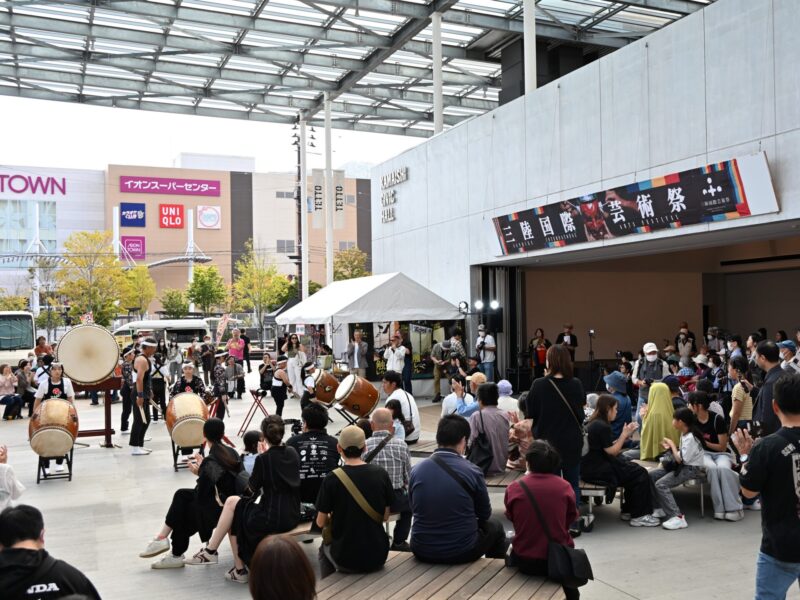
Many people came out to the outdoor square to listen to the sound of the drums.
Peasant uprisings and performing arts in the Tohoku region
The next performance was a memorial performance. "Peasant uprisings and performing arts in the Tohoku region," and it was a performance that embodied prayers for the dead and the people's will to resist.
- "Takizawa Torimai" in Hirono Town
- "Omiya Kagura" in Tanohata Village
- Iwaizumi Town's "Kyuzawa Nembutsu Sword Dance"
Three performing arts were performed.
Incidentally, Bon Odori is also considered a type of memorial art form, and is said to have its roots in the religious act of "dancing nembutsu," which was a fusion of folk dance with the Buddhist event Ullambana, a ceremony to welcome, offer prayers for, and send off the spirits of ancestors, and which led to dancing while chanting Buddhist prayers.
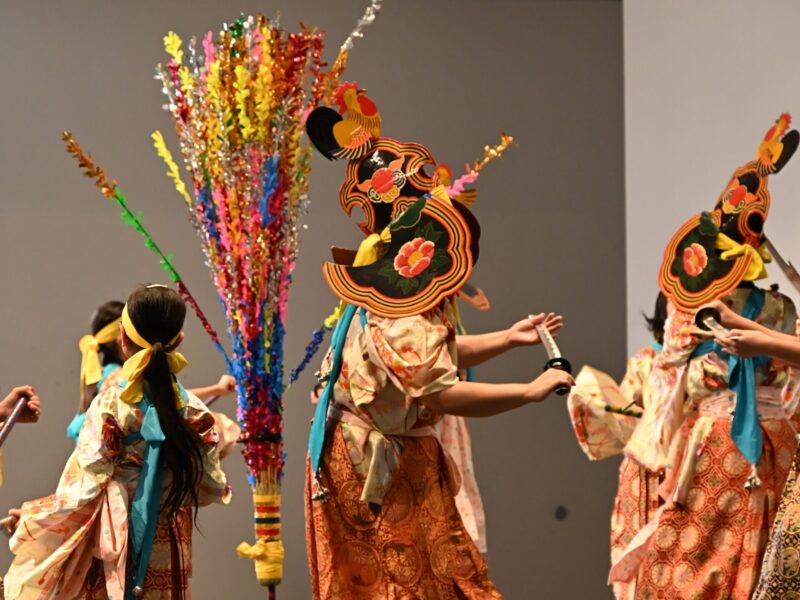
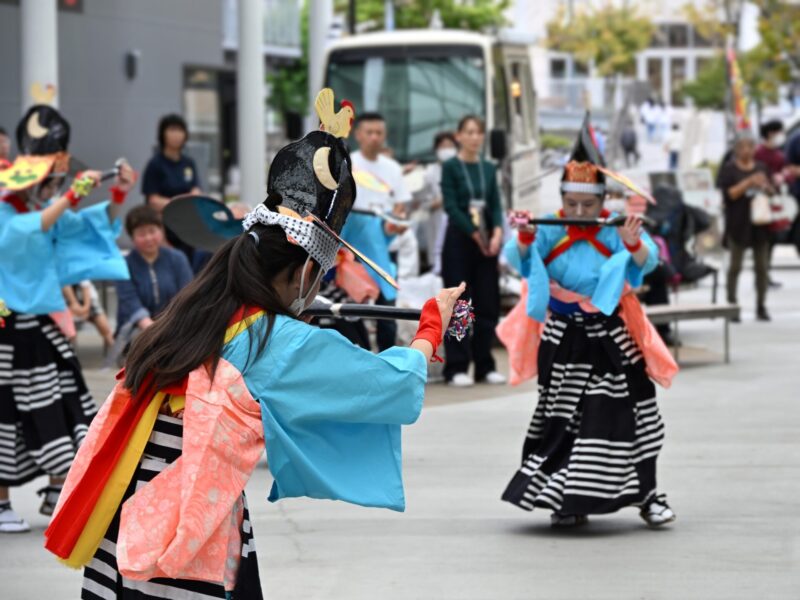
the "Tashiro Bon Dance" was performed in the outdoor plaza as the second part of the "Sanriku Festival Music and Bon Dance Festival
Sanriku Future Performing Arts Festival
This program, titled "Sanriku Future Performing Arts Festival in Kamaishi," was held in Hall A and was likely the main event of the festival.
- Kamaishi City's "Uzumiya Tiger Dance"
- Ofunato City's "Monchugumi Tiger Dance"
- "Gyozan-ryu Takase Deer Dance" in Sumita Town
- Kamaishi City's "Ogawa Deer Dance"
The four performing arts were performed and experienced by volunteers from the Kamaishi High School Regional Seminar.
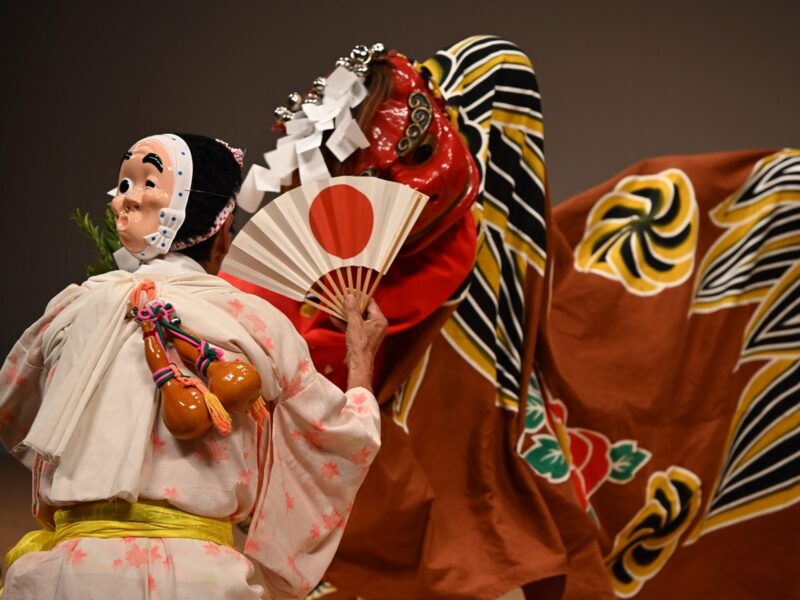
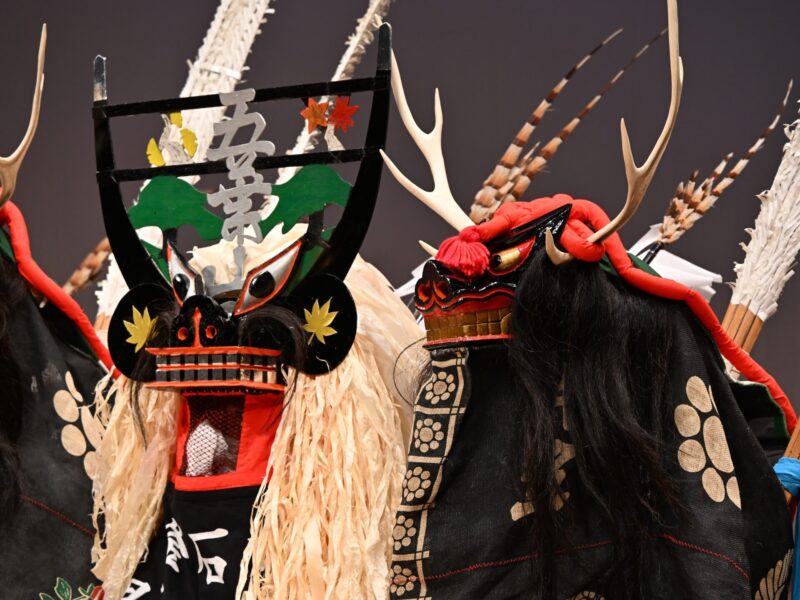
It is also a rare sight to see the "Nambu Deer Dance (Ogawa Deer Dance)" and the "Date Deer Dance (Gyozan-ryu Takase Deer Dance)" side by side.
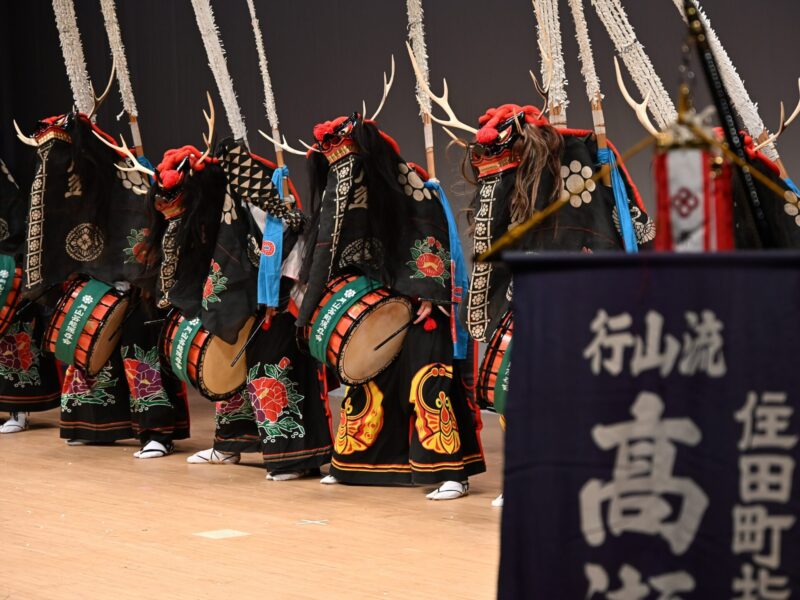
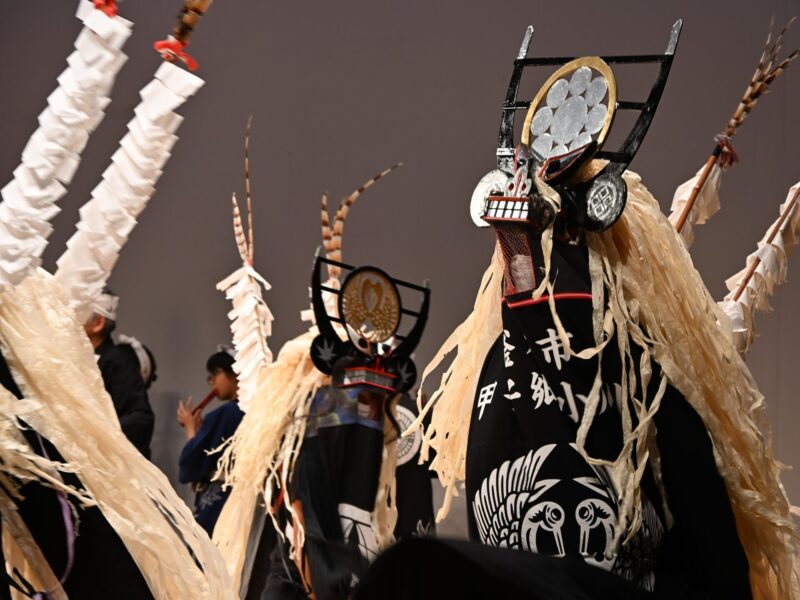
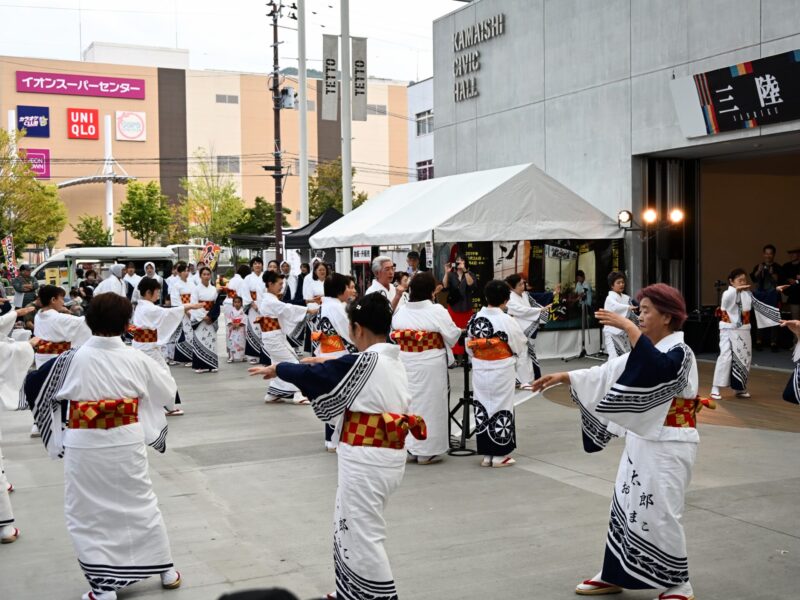
"Yataro Oshimako" from Hachinohe City, Aomori Prefecture, was performed as the third part of the "Sanriku Festival Music and Bon Odori Festival .
I got excited when I heard the calls for the "Nanyadoyara Dance," which will be performed at the Christ Festival in Shingo Village, Sannohe County, Aomori Prefecture
Food and entertainment born from the tsunami
The final program was "Food and Entertainment Born from the Tsunami .
The event will conclude with the serving of fermented amazake (sweet sake) from Sanriku in the outdoor plaza.
- Miyako City's Hanawa Shikako Dance
- Yamada Town's "Hachiman Daikagura"
- Kamaishi City's "Ogawa Deer Dance"
Three performing arts were performed.
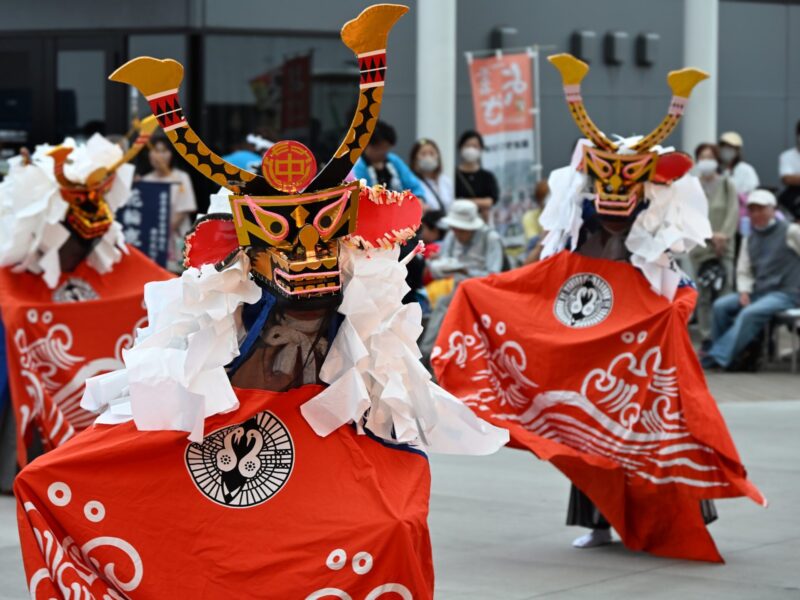
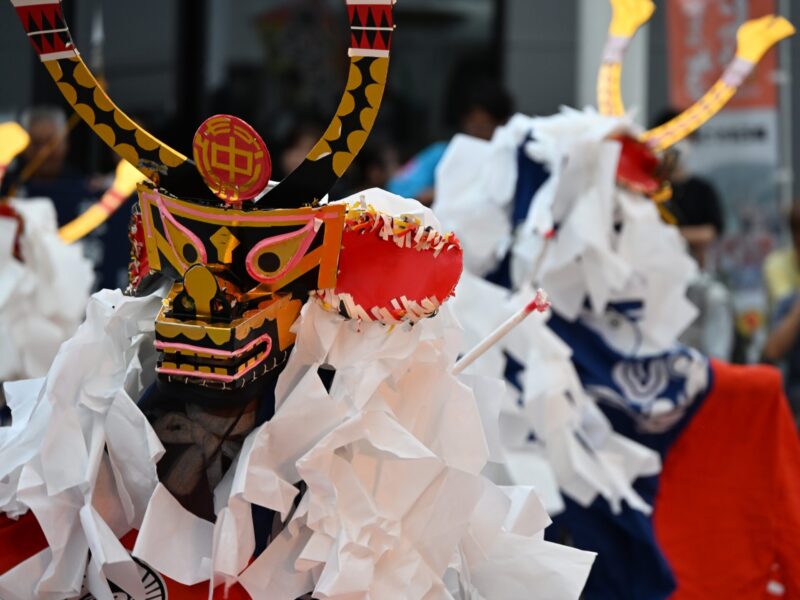
lastly
Due to time constraints, I headed home just as the Hanawa Shikako Dance finished, but looking at the official social media accounts, it seems the event ended on a high note.
In the end, we were able to see a total of 15 local performing arts groups over the two days. It's rare to be able to see so many performing arts in one go, so this was a truly luxurious event that provided a rare opportunity.
What was also striking was the fact that there were more young people involved in the performing arts than I had expected. A wide range of people, from junior high and high school students to people in their early to late twenties, seemed to belong to various groups. In recent years, there has been a lot of talk about a lack of successors and people to carry on the traditions of various fields, but I was filled with joy at seeing young people trying to carry on the traditions of their hometowns, rather than dismissing them as "outdated."
The Sanriku International Arts Festival connects the performing arts of Sanriku with the world. I would like to continue to follow its developments.



![What is the Kamaishi Railway, the first and third in Japan in the Tohoku region? [Kamaishi City, Iwate Prefecture] Government Kamaishi Railway serial number 2793](https://jp.neft.asia/wp-content/uploads/2024/03/KamaishiRailway-No1SL-150x150.jpg)
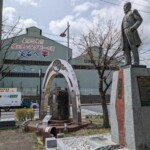
![[Kamaishi City, Iwate Prefecture] “Kamaishi Daikannon” is a giant Buddha that watches over Kamaishi Bay, one of the three great giant Buddhas in Tohoku giant buddha](https://jp.neft.asia/wp-content/uploads/2024/05/bd805e9fc2bb98f1f224d28278274c23-pdf-150x113.jpg)
![Sanriku International Art Festival 2024 | An event will be held again this year where local performing arts from the Sanriku region will be gathered together [Aomori/Iwate] Sanriku International Art Festival 2024](https://jp.neft.asia/wp-content/uploads/2024/08/main-150x150.png)
